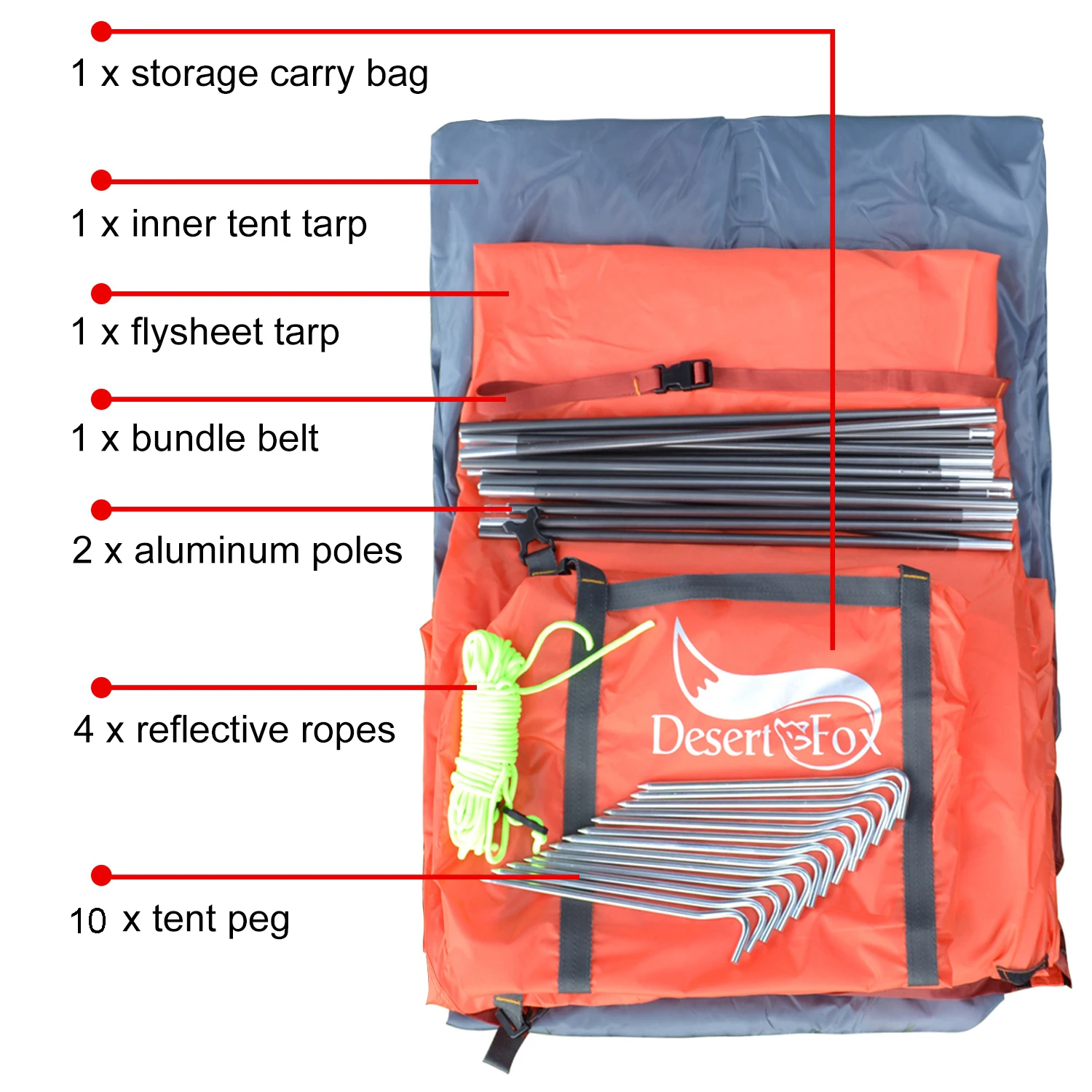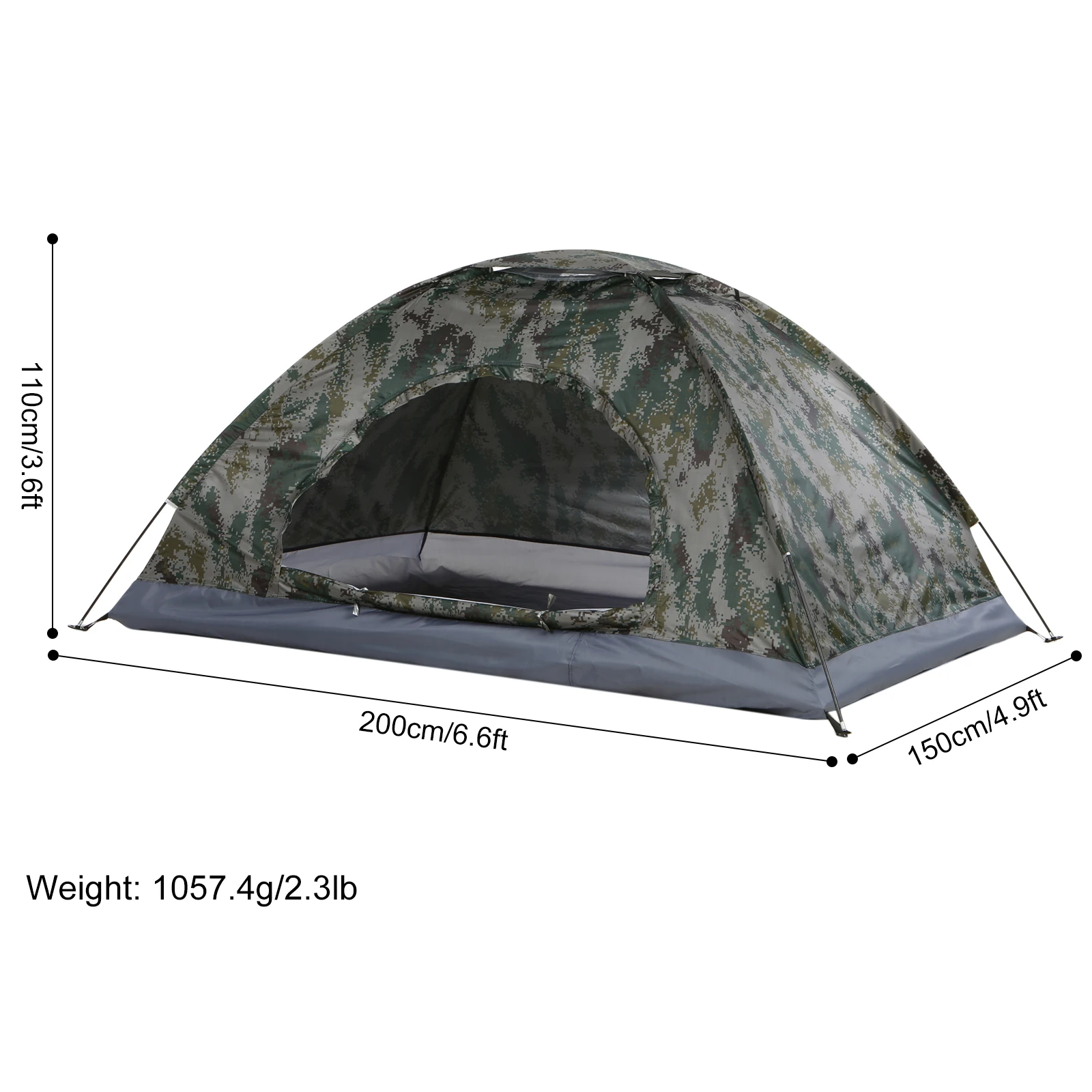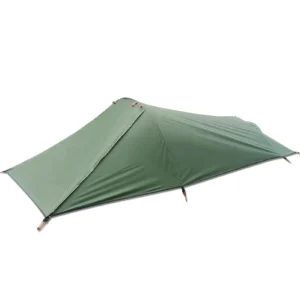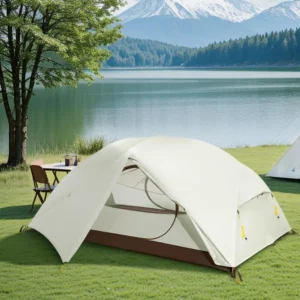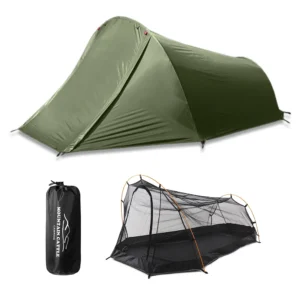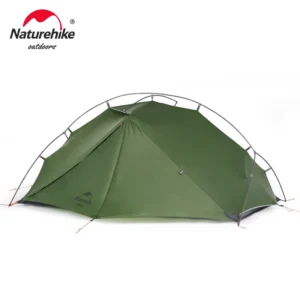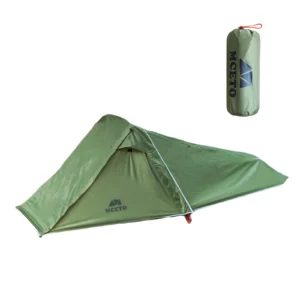Introduction: Understanding the Weight-Endurance Relationship
Every hiker faces a fundamental challenge on the trail: the delicate balance between carrying essential gear and maintaining enough energy to enjoy the journey. Among all your backpacking equipment, your shelter often represents one of the heaviest single items you’ll carry. The weight of your tent doesn’t just add pounds to your pack—it directly impacts your physical endurance, overall comfort, and ultimately, your wilderness experience.
The relationship between tent weight and hiking performance follows clear physiological principles. Each additional ounce requires more energy with every step, affecting everything from your pace to your recovery time. Understanding this relationship can transform your approach to gear selection and dramatically improve your time on the trail.
In this comprehensive guide, we’ll explore how tent weight affects your body, examine different shelter weight categories, and provide practical strategies to find your optimal balance. By drawing on scientific research and insights from experienced backpackers, we’ll help you make informed decisions about this crucial piece of equipment.
For hikers planning trips with companions, understanding different shelter options for two campers becomes especially important for distributing weight effectively. The significance of why tent weight matters for long treks becomes increasingly evident with each passing mile.
The Science of Carrying: How Extra Weight Affects Your Body
The impact of backpack weight on your body isn’t just noticeable—it’s measurable and significant. Understanding these effects helps explain why tent weight deserves careful consideration.
Physiological Impacts of Added Weight
Energy Expenditure: Research consistently shows that each additional pound (0.45 kg) in your pack increases energy expenditure by approximately 1-2% per pound of added weight. A tent that weighs 3 pounds (1.36 kg) more than necessary could demand 3-6% more energy with every step.
Cardiovascular Strain: Heavier packs elevate your heart rate and oxygen consumption. Studies have shown that carrying just 20% of your body weight can increase heart rate by 10-15 beats per minute compared to walking unloaded.
Musculoskeletal Effects: Extra weight places disproportionate stress on:
- Lower back muscles and intervertebral discs
- Knees and ankles (particularly during descents)
- Hip flexors and core stabilizers
- Shoulder and trapezius muscles at pack contact points
Measurable Performance Impacts
The effects of carrying extra weight translate into tangible hiking performance changes:
Speed Reduction: Each additional pound typically reduces hiking speed by 2-3% on level terrain and up to 5-7% on steep inclines.
Reduced Daily Mileage: A tent that weighs 4 pounds (1.8 kg) instead of 2 pounds (0.9 kg) could reduce your daily hiking capacity by up to 1-2 miles over an 8-10 mile day.
Increased Perceived Exertion: Studies using the Borg Scale show that perceived effort rises disproportionately as pack weight increases beyond 20-25% of body weight.
Extended Recovery Time: Heavier loads significantly increase recovery requirements between hiking days, particularly affecting multi-day treks.
The psychological burden of carrying excess weight shouldn’t be underestimated either. Heavy packs lead to earlier fatigue, which can affect decision-making, reduce enjoyment, and even create safety concerns when navigating difficult terrain.
Questions about whether a 2kg tent is too heavy or how heavy a hiking tent should be depend partly on these physiological factors combined with individual capabilities and trip requirements.
Tent Weight Categories and Their Impact on Trail Performance
Tent manufacturers typically group their shelters into several weight categories, each with distinct performance implications. Understanding these categories helps you make informed decisions based on your hiking style and priorities.
Tent Weight Classifications
| Category | Weight Range | Impact on Daily Hiking | Typical Features | Best For |
|---|---|---|---|---|
| Traditional/Standard | >5 lbs (>2.27 kg) | -1.5 to -2.5 miles/day | More durable materials, extra features, often freestanding, more interior space | Car camping, short hikes, base camping, harsh weather |
| Lightweight | 3-5 lbs (1.36-2.27 kg) | -0.5 to -1.5 miles/day | Balance of durability and weight savings, modest feature set | Weekend backpacking, moderate distances |
| Ultralight | <3 lbs (<1.36 kg) | Minimal impact | Thinner materials, simplified design, may sacrifice some durability | Thru-hiking, long-distance treks |
| Minimalist | <1.5 lbs (<0.68 kg) | May improve performance | Bare essentials, tarps, bivies, often not full enclosures | Fast-and-light missions, good weather conditions |
Performance Trade-offs
The relationship between tent weight and hiking performance involves several key trade-offs:
Weight vs. Durability: Ultralight tents typically use thinner materials (often 10-15 denier versus 40-70 denier in traditional tents) that may require more careful handling and have shorter lifespans under harsh conditions.
Weight vs. Comfort: Lighter tents generally offer less interior space, fewer convenience features, and sometimes require more complex setups (like non-freestanding designs that need perfect staking).
Weight vs. Weather Protection: While many lightweight tents perform admirably in challenging conditions, the most robust four-season shelters capable of handling extreme winter conditions typically carry a weight penalty.
Understanding the differences between ultralight and lightweight tents helps hikers make more informed decisions. Many serious backpackers find that investing in ultralight backpacking tents provides substantial endurance benefits, particularly on longer journeys.
Finding Your Optimal Balance: Strategic Tent Selection
Finding your ideal tent weight involves matching shelter characteristics to your specific needs and circumstances. This personalized approach ensures you’re carrying exactly what you need—no more, no less.
Matching Tent Weight to Trip Factors
Trip Duration and Type:
* Weekend trips (1-3 nights): Comfort can outweigh weight concerns; lightweight options (3-4 lbs/1.4-1.8 kg) often work well
* Extended backcountry trips (4+ nights): Weight savings become increasingly important; ultralight options (<3 lbs/1.36 kg) offer significant advantages
* Thru-hikes: Every ounce matters; ultralight or minimalist shelters typically provide the best performance
Environmental Conditions:
* Mild, predictable weather: Allows for minimal, lighter shelters
* Exposed terrain (above treeline): May require stronger materials and designs
* High precipitation areas: Need reliable weather protection which sometimes adds weight
* Winter camping: Generally requires more substantial (and heavier) shelter systems
Personal Factors:
* Physical conditioning: Better conditioning allows for carrying heavier loads with less impact
* Comfort threshold: Some hikers sleep poorly without certain features, making a slight weight penalty worthwhile
* Experience level: Beginners often benefit from more forgiving, easier-to-use shelter systems
Material and Design Considerations
Different tent materials significantly impact both weight and performance:
- Nylon vs. Polyester: Nylon typically offers better strength-to-weight ratio but absorbs more moisture; polyester absorbs less water but often weighs more for equivalent strength
- Silicone vs. PU Coatings: Silicone coatings generally offer better waterproofing at lower weights but at higher cost
- Aluminum vs. Carbon Fiber Poles: Carbon fiber poles can reduce weight by 30-40% but increase cost substantially and may be less durable
Design elements that affect weight:
* Freestanding vs. non-freestanding structures
* Single-wall vs. double-wall construction
* Number and positioning of doors and vestibules
* Use of trekking poles vs. dedicated tent poles
Lightweight backpacking tents provide an excellent middle ground for many hikers, while trekking pole backpacking tents offer significant weight savings by using hiking poles you’re already carrying for structural support.
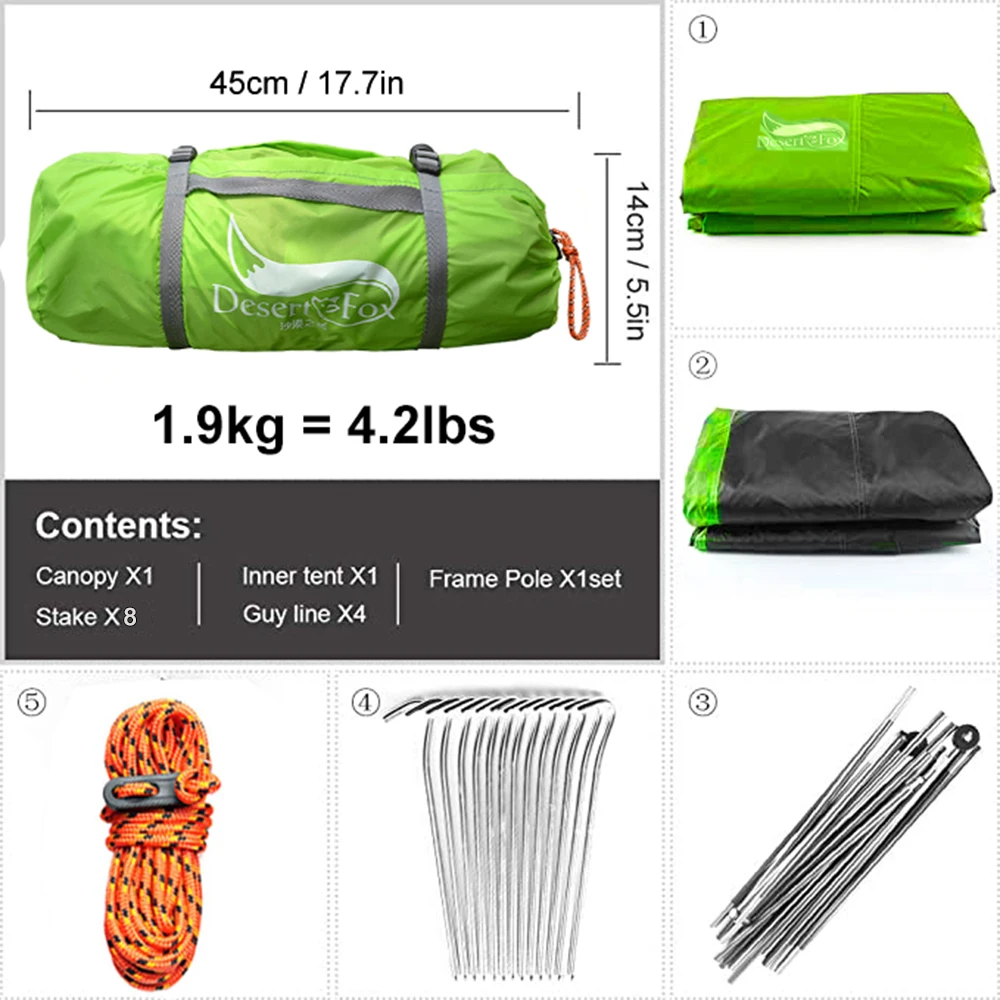
Beyond the Tent: Holistic Approaches to Weight Management
While tent weight is important, focusing exclusively on your shelter overlooks the bigger picture of pack weight optimization. A holistic approach yields the best results.
The “Big Four” Weight Categories
Experienced backpackers focus on optimizing the “Big Four” gear items that typically constitute the majority of base pack weight:
- Shelter system: Tent, tarp, hammock, or bivy (including stakes and guy lines)
- Sleep system: Sleeping bag/quilt and sleeping pad
- Backpack: The container itself often weighs 1-4 pounds (0.45-1.8 kg)
- Cooking system: Stove, fuel, and cookware
Together, these items often account for 12-20 pounds (5.4-9 kg) of gear—potentially half or more of your total pack weight. Reducing each category by even a pound creates substantial cumulative endurance benefits.
Strategic Weight Distribution
How you pack your tent matters almost as much as what it weighs:
- Position heavier items (including your tent) close to your back and centered between shoulders and hips
- Distribute weight evenly between left and right sides
- Keep frequently used items accessible without removing your pack
- Consider splitting tent components between hiking partners
Understanding techniques for mastering tent packing tips helps distribute weight more effectively, reducing perceived load and improving balance on challenging terrain.
Physical Preparation for Carrying Loads
Targeted physical training can dramatically improve your ability to carry heavier loads when necessary:
- Core strengthening exercises support proper load bearing
- Hip and leg strength training improves climbing efficiency with weight
- Upper body and shoulder conditioning reduces fatigue at pack contact points
- Aerobic capacity training improves overall endurance
For those seeking maximum weight reduction, specialized ultralight trekking pole tents represent some of the most efficient shelter solutions available.
Lightweight Backpacking Tent, Ultralight Backpacking Tent, Ultralight Bivy Tent
Ultralight Single Person Camping Tent with Aluminum Poles for 3-Season Backpacking Waterproof DesignPrice range: $94.88 through $326.82 Select options This product has multiple variants. The options may be chosen on the product pageLightweight Backpacking Tent, Ultralight Backpacking Tent, Waterproof Backpacking Tent
$391.05 Select options This product has multiple variants. The options may be chosen on the product pageCompact Backpacking Tent, Lightweight Backpacking Tent, Waterproof Camping Tent
$335.52 Select options This product has multiple variants. The options may be chosen on the product pageUltralight Backpacking Tent, Ultralight Dome Tent, Winter Camping Tent
Price range: $369.63 through $370.07 Select options This product has multiple variants. The options may be chosen on the product pageHeavy Duty 4 Season Tent, Ultralight Freestanding Tent, Winter Camping Tent
$3,722.66 Select options This product has multiple variants. The options may be chosen on the product pageBackpacking Tent with Vestibule, Freestanding Backpacking Tent, Lightweight Backpacking Tent
Price range: $446.89 through $447.22 Select options This product has multiple variants. The options may be chosen on the product page
Real-World Considerations: Making Informed Decisions
Beyond the technical aspects, practical considerations significantly influence tent selection decisions. These real-world factors help transform theoretical knowledge into optimal choices for your specific situation.
Cost vs. Weight Savings
The relationship between cost and weight often follows a predictable pattern:
* Initial weight reductions from traditional to lightweight come at reasonable cost increases
* Moving from lightweight to ultralight typically involves steeper price premiums
* The final few ounces of weight reduction often come at the highest cost per ounce saved
For many hikers, the sweet spot lies in midrange lightweight options that offer significant weight savings without the premium prices of specialized ultralight gear.
Durability Concerns and Maintenance
Lighter tents generally require more careful treatment and maintenance:
* Ultralight floor materials may need additional protection through groundsheets
* Thinner fabrics demand more careful site selection and setup
* Reduced weatherproofing may require improved campsite selection skills
* Repair skills become increasingly important as material thickness decreases
Experience Level Considerations
Your hiking experience should influence tent weight decisions:
* Beginners often benefit from more forgiving, feature-rich shelters despite weight penalties
* Intermediates can typically transition to lightweight options as their skills improve
* Experienced backpackers generally manage the compromises of ultralight shelters more effectively
The durability of ultralight hiking tents remains a common concern, though modern materials have dramatically improved longevity with proper care. For those wanting weight savings without sacrificing ease of setup, ultralight freestanding tents offer an excellent compromise.
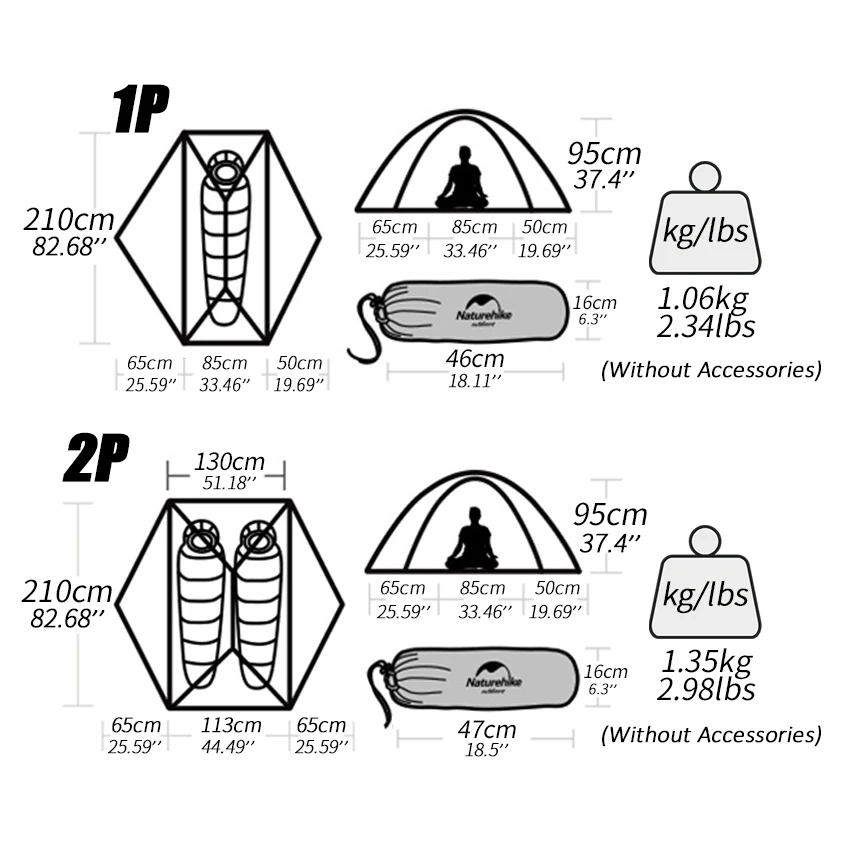
Frequently Asked Questions About Tent Weight and Hiking Performance
Is there an ideal tent weight for most hikers?
While needs vary by individual and trip type, most backpackers find their sweet spot with shelters weighing between 2-4 pounds (0.9-1.8 kg) per person. Weekend backpackers often prefer the comfort-to-weight ratio of the upper end of this range, while long-distance hikers typically gravitate toward the lower end. Understanding good weight for ultralight tents helps establish realistic targets.
How much difference does 1 pound (0.45 kg) really make in a hiking experience?
A single pound may seem insignificant, but its impact compounds significantly. Over a 10-mile day with approximately 20,000 steps, that pound requires lifting an extra 20,000 pounds (9,072 kg) cumulatively. Studies suggest each pound typically reduces hiking speed by 2-3% and increases energy expenditure by similar amounts. Over multi-day trips, these effects multiply.
Are ultralight tents sufficiently durable for extended trips?
Modern ultralight materials can be surprisingly durable when properly handled. Many thru-hikers successfully use ultralight shelters for 2,000+ mile journeys. The key lies in appropriate site selection, careful handling, and basic maintenance skills. Most failures result from user error rather than material limitations.
How can I reduce my tent weight without buying new equipment?
Several approaches can reduce effective tent weight:
* Leave the stuff sack behind (use your pack liner instead)
* Replace heavy stakes with lightweight alternatives
* Bring only the minimum required stakes
* Share tent components with hiking partners
* Leave the footprint behind in good conditions
* Consider seasonal adaptations (removing the rainfly in reliable weather)
What weight reduction offers the biggest performance improvement?
The most noticeable performance improvements typically come from reducing weight carried on your feet and back. For most hikers, lightening your shelter, backpack, and footwear provides the highest return on investment for both comfort and endurance.
Making the Right Choice for Your Hiking Style
The relationship between tent weight and hiking endurance follows clear scientific principles: lighter loads conserve energy, reduce fatigue, and allow you to hike further with greater comfort. Yet the ideal tent weight isn’t universal—it’s deeply personal, reflecting your unique hiking style, physical condition, and trip requirements.
When selecting your shelter, consider the full context of your adventures. Weekend warriors might prioritize comfort features that long-distance hikers willingly sacrifice. Those hiking in volatile alpine environments need different protection than desert trekkers. Understanding what makes lightweight tent trekking successful in different environments helps make appropriate selections.
The perfect tent balances weight against your need for comfort, protection, and peace of mind. By applying the principles discussed throughout this guide, you can make informed decisions that enhance your trail experiences rather than hindering them. Remember that the best tent isn’t necessarily the lightest—it’s the one that helps you fully enjoy your unique outdoor adventures while providing the protection you need.
